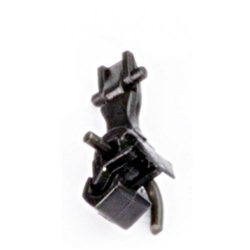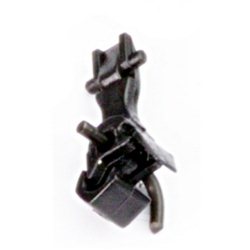When dry brushing, you might want to consider using an older brush, or a cheaper one at least, as it is going to...
No products
Product successfully added to your shopping cart
There are 0 items in your cart. There is 1 item in your cart.
Search Tips
Christmas and New Year
We are dispatching orders every weekday apart from Christmas Day, Boxing Day and New Year's Day.
If you order is time critical, select next day delivery at checkout.
The shop in Sandown is closed from 25th December, reopening on 30th December.
What are NEM pockets on N gauge rolling stock?
You'll likely have come across the term "NEM pockets" when delving into the world of model railway couplers. But what exactly are these NEM pockets, and why are they so important for your N scale layout?
First and foremost, NEM stands for "Normen Europäischer Modellbahnen," which is the European standards organisation for model railways. NEM pockets, then, refer to the standardised mounting points or sockets built into the underside of European model railway vehicles, including those produced for the UK market.
The purpose of these NEM pockets is to provide a consistent and secure way to attach couplers to your locomotives, wagons, and other rolling stock. By adhering to these standardised dimensions and positioning, you can be sure that your couplers will fit and function as they should, ensuring smooth and reliable operations on your layout.
When it comes to common NEM pocket sizes, the one that matters for N gauge is NEM 362. These specifications dictate the exact dimensions and location of the coupler mounting points, so it's essential to match your couplers accordingly.
Speaking of couplers, the NEM pockets are designed to accept specific types of European model railway couplers, such as the Dapol compatible varieties. Using the correctly sized and compatible couplers is crucial for reliable coupling and uncoupling, so be sure to do your research and choose wisely.
Now, you may be wondering, "Why is this NEM pocket business so important for my N gauge layout?" The answer lies in the fact that the European model railway industry has largely standardised around these NEM specifications. By using NEM-compatible components, you can ensure that your locomotives, wagons, and other rolling stock will seamlessly integrate with one another, regardless of the manufacturer.
This standardisation is particularly beneficial as it allows you to mix and match pieces from various sources – whether it's a locomotive from Dapol, a wagon from Peco, or a piece of rolling stock from Graham Farish – without having to worry about compatibility issues.
So, if you're building an N gauge layout, familiarising yourself with NEM pockets and ensuring your choice of couplers aligns with these standards is an essential step in creating a smooth and realistic operating experience. Embrace the power of European standardisation, and let your N gauge dreams take flight!
Click here to receive the tips weekly in your mailbox. You can unsubscribe at any time.










